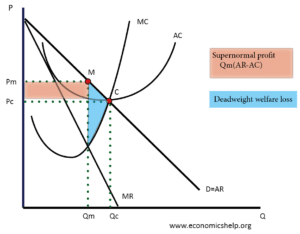

Thus, for transactions under review in the Ordinary Procedure, 1 the timeline begins with a “completeness review” period of typically four to eight weeks, followed by Phase I (30 calendar days) and Phase II (90 calendar days).
#Anti monopoly 2 full#
For example, for the vast majority of transactions requiring remedies in China, SAMR not only takes the full review period but also requires the parties to “pull and refile,” effectively restarting the review clock at zero. Such a mechanism would provide SAMR even more timing flexibility in its review process.
 the notifying party is negotiating remedies with the AML enforcement agency. the notifying party is requested by the AML enforcement agency to supplement additional documents or information or. the notifying party applies or agrees to suspend the review clock. Article 30 of the Draft AML would propose to stop the review clock whenever: The Draft AML preserves the same statutory review periods, but proposes to introduce a stop-the-clock mechanism that would allow SAMR to pause its examination of a notified transaction, potentially leading to even greater timing uncertainty given the already challenging review timelines. Transactions with significant competition concerns and industrial policy implications can spend over a year in review, especially when SAMR faces pressure from strategic stakeholders in China who may opportunistically attempt to use the review process to extract commercial or political concessions from the parties. SAMR’s current merger review process requires longer review times for complex, cross-border mergers and acquisitions than review times for similar transactions in almost any other jurisdiction. The following table sets forth a comparison between the Draft AML and the current AML:Īdds a ‘Stop the Clock’ Mechanism in Merger Reviews It would also raise the statutory maximums for other conduct-related behavior. The Draft AML proposes to significantly increase the level of fines for such failures to file. One of the most criticized provisions of the current AML (at least domestically in China) has been the very low statutory maximums for monetary penalties, especially for failures to file mergers, acquisitions and joint ventures that meet the notification thresholds for mandatory SAMR review. In its 11 years of antitrust enforcement, China’s agencies have collectively imposed fines of only RMB 12 billion (approximately USD 1.7 billion), lagging far behind penalties levied by peer agencies and regulators in the U.S. Significant Increases on Maximum Fines for Antitrust Violations, Particularly Failures To Notify Qualifying Mergers, Acquisitions and Joint Ventures While there is no fixed timetable for formal adoption, the Draft AML could be passed by the National People’s Congress as early as 2021 if the remaining process runs smoothly. The Draft AML is still subject to consultation and further review by China’s administrative and legislative bodies. The Draft AML would also articulate a more precise definition of “control” for evaluating notifiability of potential transactions, and add an indispensability requirement for the use of efficiency defenses.
the notifying party is negotiating remedies with the AML enforcement agency. the notifying party is requested by the AML enforcement agency to supplement additional documents or information or. the notifying party applies or agrees to suspend the review clock. Article 30 of the Draft AML would propose to stop the review clock whenever: The Draft AML preserves the same statutory review periods, but proposes to introduce a stop-the-clock mechanism that would allow SAMR to pause its examination of a notified transaction, potentially leading to even greater timing uncertainty given the already challenging review timelines. Transactions with significant competition concerns and industrial policy implications can spend over a year in review, especially when SAMR faces pressure from strategic stakeholders in China who may opportunistically attempt to use the review process to extract commercial or political concessions from the parties. SAMR’s current merger review process requires longer review times for complex, cross-border mergers and acquisitions than review times for similar transactions in almost any other jurisdiction. The following table sets forth a comparison between the Draft AML and the current AML:Īdds a ‘Stop the Clock’ Mechanism in Merger Reviews It would also raise the statutory maximums for other conduct-related behavior. The Draft AML proposes to significantly increase the level of fines for such failures to file. One of the most criticized provisions of the current AML (at least domestically in China) has been the very low statutory maximums for monetary penalties, especially for failures to file mergers, acquisitions and joint ventures that meet the notification thresholds for mandatory SAMR review. In its 11 years of antitrust enforcement, China’s agencies have collectively imposed fines of only RMB 12 billion (approximately USD 1.7 billion), lagging far behind penalties levied by peer agencies and regulators in the U.S. Significant Increases on Maximum Fines for Antitrust Violations, Particularly Failures To Notify Qualifying Mergers, Acquisitions and Joint Ventures While there is no fixed timetable for formal adoption, the Draft AML could be passed by the National People’s Congress as early as 2021 if the remaining process runs smoothly. The Draft AML is still subject to consultation and further review by China’s administrative and legislative bodies. The Draft AML would also articulate a more precise definition of “control” for evaluating notifiability of potential transactions, and add an indispensability requirement for the use of efficiency defenses. 
introduce mechanisms to stop the review clock during merger control assessments by SAMR.dramatically increase fines, especially for (i) failures to notify mergers, acquisitions and joint ventures, (ii) gun-jumping, and (iii) breach of merger conditions and.The key changes in the Draft AML include proposals to: On January 2, 2020, the State Administration for Market Regulation (SAMR) published a draft amended Anti-Monopoly Law for public comments (Draft AML). For the first time since China’s Anti-Monopoly Law (AML) came into force in 2008, the government is proposing major changes to its centerpiece antitrust legislation.







 0 kommentar(er)
0 kommentar(er)
